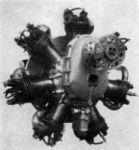
Pobjoy P-Type (A39)
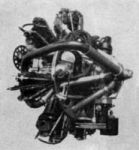
Pobjoy P-Type (A39)
The Pobjoy Cascade Series II Engine
by Paul Wells
Published 1 Sep 2022
Background
Douglas Rudolf Pobjoy started designing his first aero engine, the Pobjoy P-Type, in 1925 when he was an education officer at RAF Cranwell. This 7-cylinder, 2,479 cc (151.28 in³), air-cooled and geared radial produced 60 / 62 bhp (rated / achieved) (44.74 / 46.23 kw), completed Air Ministry type testing, and received an Air Registration Board (ARB) Engine Technical Certificate (ETC) in late 1928. In total, between 1926 and 1930, three of these engines were constructed. The prototype engine, P-I, survives and is now fitted to a 3-wheel Morgan car in the UK. This motor once powered the Beazley 'Pobjoy Special' aircraft. After Steve Wittman bought the aeroplane in 1932, he replaced the original engine with a new and more powerful Pobjoy R-Type. He is then said to have used the P-Type to power his Florida swamp boat. The engine returned to the UK during the 1980s.
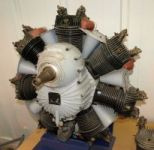 |
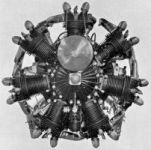 |
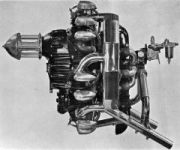 |
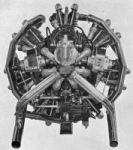 |
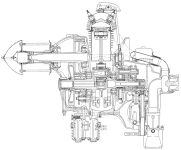 |
| Pobjoy R-Type (Wikimedia Commons, A39) | ||||
The design of a new and larger 2,835 cc (173.00 in³) model, the R-Type, started in 1929. Pobjoy Airmotors Ltd, a private company, was established in 1930 at Hooton Park, Cheshire, England. It began manufacturing the engine after it passed Air Ministry type testing in 1931 and received ETC #34. The company had expected the motor would sell to manufacturers of single-engine sports aircraft such as the Comper Swift. However, to their surprise, the engine was also ordered by General Aircraft and Shorts Brothers for their twin-engined Monospar and Scion light transport aircraft. Both manufacturers soon wanted a more powerful motor with additional features for their aircraft. So, in 1934, after much development work, Pobjoy Airmotors announced three new engine models, the Niagara, Cataract, and Cascade.
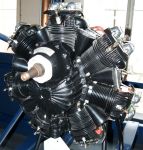 |
| Niagara II (Wiki) |
The Niagara I (ETC # 25) was the most powerful of the three new engines and intended to fulfil the demands of the fledgling light transport aircraft market in the UK and Europe. In a press release, the company promised detailed modifications and an improved ignition system, with an electric starter and a generator as options. However, the most significant change was that the motor now came with a purpose-built cowling as standard. And while the motor benefited from several detailed modifications from the earlier R-Type, those changes did not yet include the promised electric starter or a generator option. Those changes would only become available, along with other improvements, on the 1935 Niagara II.
The Cataract I of 1934 is a 're-badged' R-Type but includes some modifications developed for the Niagara. What didn't change (nor ever would for the Cataract) was that the model remained uncowled and without an electric starter or a generator. Because of a slightly increased compression ratio, the Cataract produced marginally more horsepower than the R-Type, giving 78/80 bhp (58.16/59.66 kw) when measured under test conditions.
The third of the new 1934 engines was the Cascade I. Pobjoy intended the Cascade would be a simple, lightweight, low-cost, aero-engine. It differed from the Cataract only by removal of the propeller gearbox. Being a direct-drive engine required the engine rpm to be reduced to keep the propeller rpm within acceptable limits. Consequently, the power output was roughly ten bhp (7.4 kw) below that of the Cataract and removing the propeller gearbox reduced the weight by 9 lbs to 126 lbs. Unfortunately, only one 1934 Cascade engine was built and run, and the engine was never type tested.
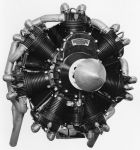 |
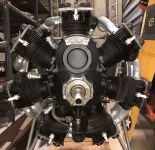 |
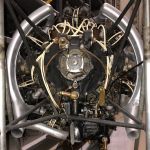 |
| Cascade I (Pobjoy) | Cascade II (EAA) | |
In 1935 Pobjoy Airmotors Ltd. (soon to become Pobjoy Airmotors and Aircraft Ltd.) released the new Niagara II engine. Although no more powerful than the 1934 version, it included a new style of rear-drive and rear-cover that could accommodate an optional electric starter and generator. Also introduced were other minor changes to improve the reliability and maintainability of the engine.
In the same year, Pobjoys' introduced the Cataract II engine. It is more or less an uncowled 1934 Niagara I – right down to the weight and compression ratio. But, oddly, according to ETC #31, the engine developed five bhp (3.7 kw) more than the Niagara II.
The Niagara III (ETC #27) and Cataract III were both released in 1936. Although intended for different markets, both types retain the most commonality among any two Pobjoy models. Each type incorporated new cylinder and cylinder head designs, plus other detailed improvements. The intended market of the Cataract III remained focused on training aircraft and the amateur pilot rather than the commercial transport aircraft market. Cataract III engines did not have additional options available to customers of the Niagara III, allowing the purchase price to be low enough for its customer base. For example, the Niagara III customer had the option to include Rotax ignition. However, each Rotax magneto was twice the weight (and price) of the BTH M1/2 fitted as standard on the Niagara III and Cataract III.
| Engine Particulars | Pobjoy R-Type | Niagara III | Cascade II |
|---|---|---|---|
| General Description | 7-cylinder, single row, air-cooled, normally aspirated, static radial | ||
| Bore and Stroke | 77 x 87 mm (3.032 x 3.425") | ||
| Compression Ratio | 5.70:1 | 6.00:1 | 5.89:1 |
| Swept Volume | 2,835 cc (173.0 in³) | ||
| Propeller Reduction Ratio (propeller : crankshaft) | 0.464 : 1 | 0.468 : 1 | Ungeared |
| Propeller Reduction Ratio (crankshaft : propeller) | 2.1552 : 1 | 2.1368 : 1 | Ungeared |
| Propeller Rotation (viewed from anti-propeller end) | Anti-clockwise | Anti-clockwise | Clockwise |
| Net Dry Weight (to the latest AID leaflet E124 + 2.5%) | 134 lbs | 171 lbs | 146 lbs |
| Engine Sea Level Performance | |||
| Max Takeoff and Climb Power (bhp @ rpm) | 72 / 75 @ 3,000 | 85 / 88 @ 3,300 | 79 / 82 @ 3,200 |
| Fuel Consumption ≤ 90% Throttle (galls/hr, liter/hr, from ARB ETC) | 6.0, 27.28 | 6.75, 30.69 | 6.5, 29.55 |
| Specific Fuel Consumption, ≤ 90% Throttle (pts/bhp/hr, from ARB ETC) |
0.640 | 0.614 | 0.634 |
| Oil consumption (pts/hr) | 1.0 to 2.0 | ||
| Max Emergency Power (bhp @ rpm) | 76 / 80 @ 3,300 | 90 / 93 @ 3,625 | 83 / 87 @ 3,525 |
| Max Cruising Power (bhp @ rpm) | 64.5 / 67.5 @ 3,000 | 76 / 79 @ 3,300 | 75 / 77.5 @ 3,200 |
| Engine RPM Limitations | |||
| Max Takeoff | 3,000 | 3,300 | 3,200 |
| Max Climb | 3,000** | 3,300** | 3,200** |
| Max Emergency | 3,300* | 3,625* | 3,525* |
| Max Cruising | 3,000 | 3,300 | 3,200 |
| Max Emergency Cruising (one engine out on multi-engine a/c) | 3,000 | 3,300 | 3,200 |
| Max Diving | 3,300 | 3,625 | 3,525 |
| * = 5-minute limit. ** = 60-minute limit. | |||
Aircraft
 |
| Pitcairn PA-22 (Wiki) |
Various aircraft types used Pobjoy radial engines, including a US Army balloon and an American helicopter. But Douglas Pobjoy also always expected that autogyros would be a market for the engine. In anticipation of this, Pobjoy Airmotors designed a drive component capable of turning autogyro rotors when required. The accessory consisted of a drive shaft driven by a ratchet clutch from the end of the crankshaft. The accessory was designed in-house by the company. Its abilities became well-proven in machines such as the Kay Gyroplane, Westland CL.20, and the Wymann-Lepere CL 10B. But another enthusiastic designer who used the Pobjoy engine for his autogyros was the American Harold Pitcairn. And if it had not been for Pitcairn, there would not have been a need for the Cascade II.
Harold Pitcairn designed several fixed-wing aircraft and autogyros during the 1920s through to the early 1940s. Then, in the early 1930s, he created an experimental autogyro (PA-22) that, instead of ailerons, elevators and rudders, utilised tilting of the rotor head for control (known as 'direct control').
Work on the side-by-side two-seat PA-22 design started in 1932, and the first flight took place the following year using an R-Type engine. The PA-22 underwent 13 significant design changes during its seven years of operation. At one time or another, it used an R-Type, Niagara I, and Niagara II engine. Unfortunately, the PA-22 perished in a hangar fire in 1951.
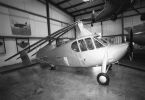 |
| ACA AC-35 (NASM) |
In 1935, the American Bureau of Air Commerce signed a contract with the Pitcairn Autogyro Company (PAC) to design and build a roadable autogyro. Although six other companies had tendered for the contract, only the Pitcairn entry met or exceeded all the Bureau's requirements. It was the usual practice for PAC to license their designs to other manufacturers - in this instance, the Autogiro Company of America – a subsidiary of the Pitcairn Autogyro Company. As a result, the winning design became known as the Autogiro Company of America AC-35.
The layout of the AC-35 required the Pobjoy engine to be in an enclosed and fireproof box placed behind the passenger cabin's side-by-side seats. A cooling fan driven by the engine fed cooling air through louvres and over and around the motor. Road drive power is provided from the rear of the engine crankshaft via a clutch and gear assembly and then to a drive shaft onto the tailwheel. A drive shaft from the front of the engine crankshaft runs between the seats to a selector box. Controls in the cockpit allow the selector box to (1) couple and spin the rotor blades pre-flight, (2) drive the propeller via the propeller gearbox for flight, or (3) disengage the rotor and propeller drives and permit road drive.
The AC-35 propeller gearbox has a drive ratio of 2.1368:1 - the same as a Niagara III gearbox. However, although similar in appearance, the autogyro's gearbox is not thought to have been designed by Pobjoys. Neither is the rotor drive considered to be of Pobjoy-design. Whether Pitcairn took inspiration or made use of Pobjoy-built parts remains unclear.
Examination of the EAA museum's Cascade II reveals that the engine is a standard Niagara III modified for the AC-35. The motor differs only by deleting the propeller gearbox and adding a unique adapter drive at the rear of the crankshaft. The engine does not have a generator as it is impossible to install one when the engine has a Pobjoy pull starter.
Only two examples of the Cascade II engine were built. The EAA museum example, engine #2502, is the second of two ordered for the AC-35. The other, #2501, is fitted to the AC-35 (NX70) exhibited at U.S. National Air and Space Museum (NASM) Steven F. Udvar-Hazy Centre, Chantilly, Virginia. After Harold Pitcairn decided against constructing a second AC-35, he tried to sell the spare engine back to Pobjoy Airmotors and Aircraft. However, the company was under the firm control of Short Brothers and showed no interest in the motor.
Harold Gallatin (EAA 20) probably bought the Cascade II engine during the late 1950s or 1960. He built the test stand and, at one time, installed an ignition system of his design. He was also known to attend air shows to demonstrate the engine. One EAA has suggested that Harold donated the Cascade II to the EAA museum during Oshkosh 1980.
Without the AC-35's original engine or airframe logbooks or access to U.S. Federal Aviation Administration (FAA) records, a few Cascade II mysteries are still to be solved. With no response from the FAA or NASM to my queries, perhaps others could assist in resolving these mysteries?
Each Pobjoy engine carried a data plate on the front of the motor that gives the date of manufacture (DoF) and serial number. We know the build date of engine #2502 is July 1936, but what is the build date of engine #2501? In January 1936, The Aeroplane magazine reported that two direct-drive (Niagara) engines had started testing before their eventual shipment to the USA. The AC-35 first flew in March 1936, a date possibly too early for it to have been powered by Cascade #2501. Interestingly, another candidate engine exists for the AC-35's first flight engine, the Niagara I, #1039.
Original AC-35 drawings show it fitted with a Niagara engine. Many years ago, Niagara I, #1039, was imported to South Africa from the USA. When the motor reached its destination, the new owner found that the propeller gearbox had parts missing. Interestingly, the engine plate also has an additional stamp - "AC 35". So did the AC-35 first fly with a Niagara I engine? Unfortunately, as long as the date of manufacture of engine #2501 remains unclear, we do not know.
Abbreviations
A39 = Aerosphere 1939
a/c = Aircraft
EAA = Experimental Aircraft Association
ETC = Engine Type Certificate
gal = Gallons (U.S.)
galls = Gallons (imperial). 1 gall = 1.20095 gal = 4.546092 l
hr = Hour
l = liter
lbs = Pounds (weight)
mm = Millimetre
NASM = National Air and Spece Museum
PAC = Pitcairn Autogyro Company
pts = Pints (imperial). 1 pt = 0.1501187 gal = 0.568261 l
RAF = Royal Air Force